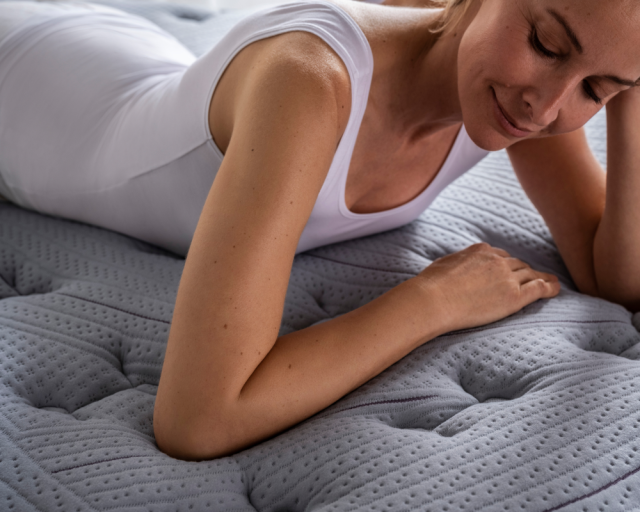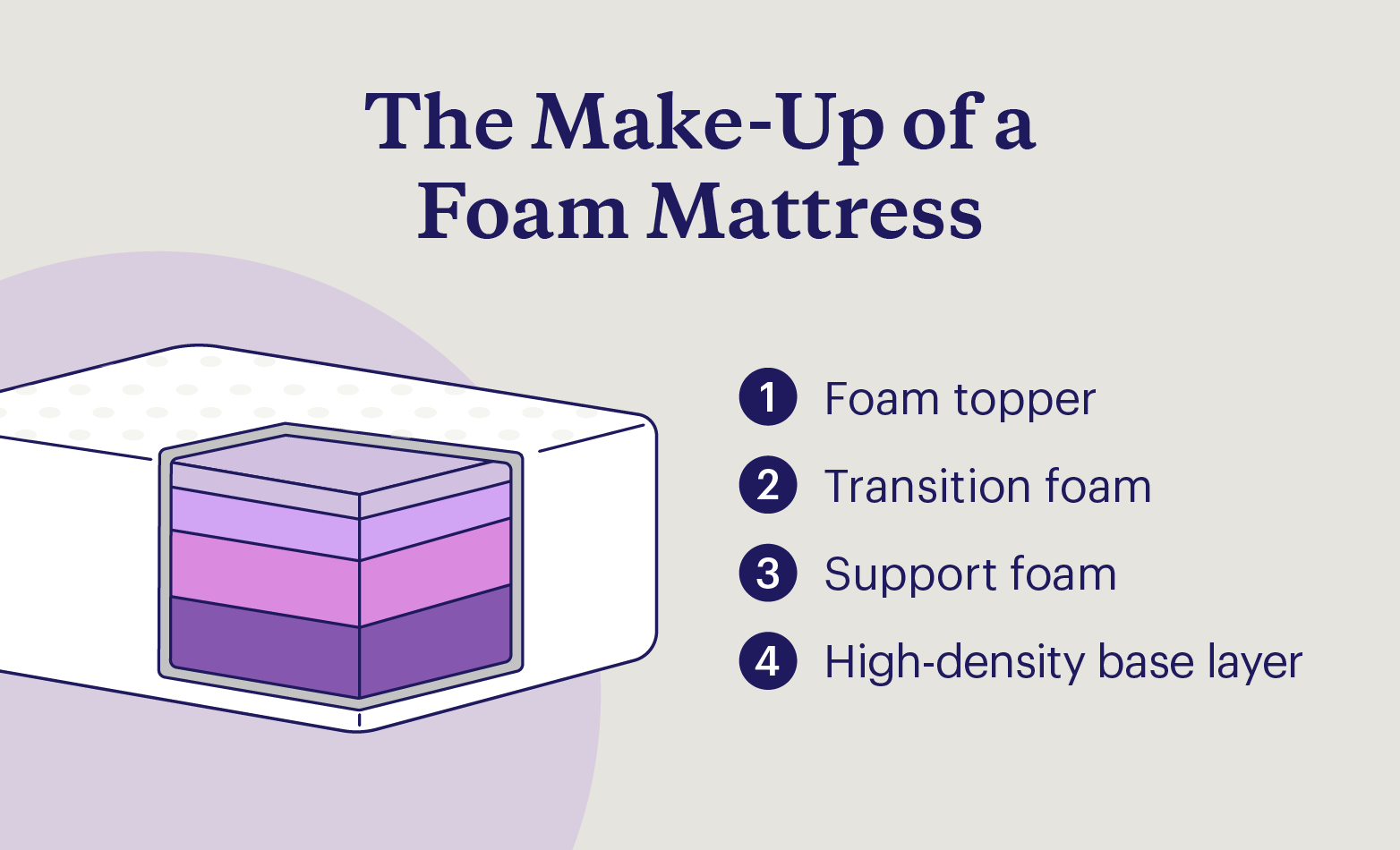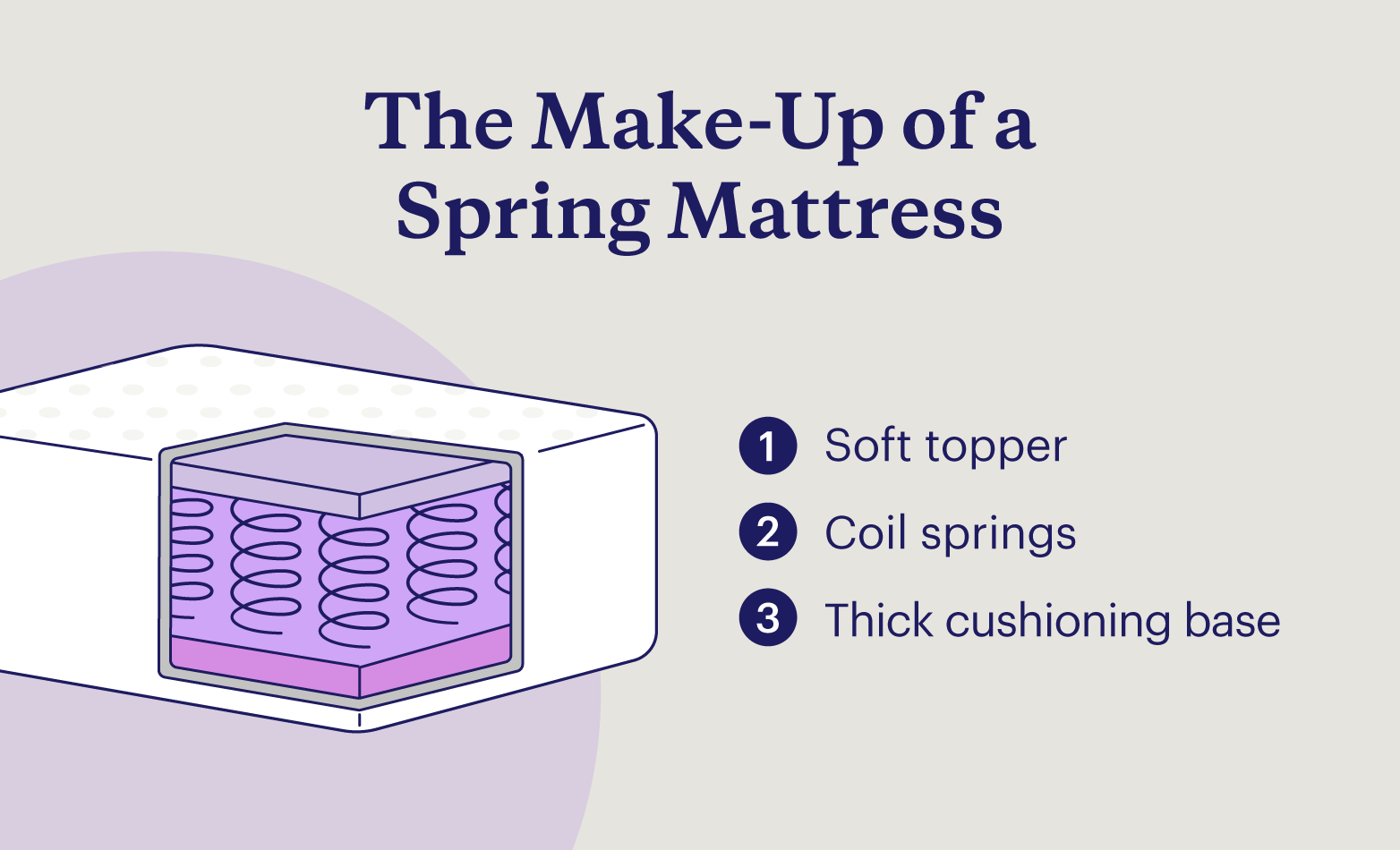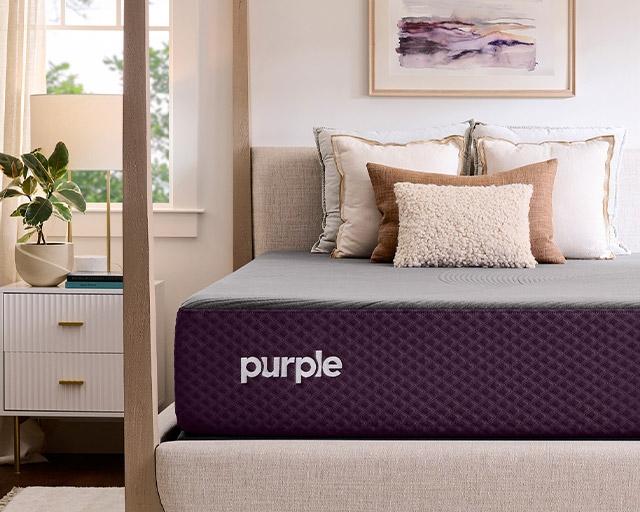
Foam vs. Spring Mattress: Which Suits You Better?
A foam mattress is made of layers of foam material that conform to the sleeper’s body. Spring mattresses are made of a layer of coil springs on the bottom and a top comfort layer. Both mattresses have their own set of unique benefits so the right mattress for you will depend on body type, sleep position, and other needs.
Humans spend approximately one-third of their lives sleeping. Because of this, picking the right mattress has a huge impact on not just sleep quality but also quality of life.
When it comes to foam vs. spring mattresses, there are a number of factors to consider. Both types of mattresses have their benefits, which are mostly dependent on the person. Continue reading to learn which type of mattress is the best fit for you.
| Type | Description | Qualities |
| Foam Mattress | Foam mattresses are made from layers of foam that conform to the body. | Good motion isolation Variety of price points Preferred by side sleepers Offers good support for joint pain |
| Spring Mattress | Spring mattresses are made with a base layer of metal innersprings and a top comfort layer. | Breathable, allowing for cooler sleeping conditions Affordable options Can be good for heavier people Offers strong support for back pain |
What Is a Foam Mattress?
Foam mattresses have become increasingly popular since their introduction to the consumer market in the '90s, largely due to their high use of viscoelastic, or memory foam, which molds to the sleeper’s body and retains its shape when not in use.
Because of their ability to contour to the sleeper's body shape, foam mattresses offer support for those with hip or joint pain, particularly if they’re side sleepers. Foam mattresses are also a great choice for people who sleep lightly, as the foam offers motion isolation where movements aren’t felt across the entire mattress.
From super soft to very firm and a wide range of budget options available, foam mattresses can suit all types of sleepers. The specific materials the foam mattress is made of will determine its features, benefits, and drawbacks. Here are some of the different types of foam mattresses:
- Traditional memory foam: Standard memory foam is generally the most affordable type of foam mattress, as it is the basic type of foam mattress without any additional features.
- Polyfoam: Polyurethane foam, or polyfoam, is also commonly used in mattresses. The material is much bouncier than traditional memory foam.
- Gel-infused foam: Although gel-infused foam has a similar feel to traditional memory foam, it is embedded with cooling liquid gel or gel capsules that allow heat to dissipate, making for a cooler sleep.
- Plant-based foam: While generally not 100% plant-based, plant-based foam mattresses are considered a greener alternative to traditional memory foam, which uses petroleum-based products. Plant-based foam mattresses are usually made partially from soy and retain less heat than regular memory foam.
| Benefits | Considerations |
| Good for back, hip, and other joint pain | Prone to heat retention |
| Good for side sleepers | Higher-end foam mattresses can be very costly |
| Well-distributed support | New foam mattresses can have an unpleasant smell for the first few days |
| Good motion isolation | Not bouncy |
| Options for all budgets | Mattress is quite heavy |
| Poor edge support, making sitting on the edge of the bad uncomfortable |
What Is a Spring Mattress?
Spring, or innerspring coil mattresses, are made from a base of metal spring coils with a top layer of soft materials. These are the most common types of mattresses. The coils offer firmer support and are therefore a great option for those of heavier weight as well as those who struggle with back pain. Because of their design, they also allow for better airflow, making them a good option for people who tend to sleep hot.
Spring mattresses vary greatly, from different coil shapes to different top layers. These variances mean that there are plenty of options for all sleepers. Here are some of the most popular types of spring mattress coils:
- Bonnell coils: These individual hourglass coils, also called open coils, are connected by metal wires and evenly distributed throughout the mattress. Mattresses with Bonnell coils are the oldest type of spring mattress and generally the most affordable.
- Offset coils: With a similar shape to the metal wire connection of Bonnell coils, offset coils are slightly stiffer, conforming to the body well.
- Pocket coils: Pocket coil mattresses tend to be on the more expensive side. Pocket coils are individual springs wrapped in fabric, making it one of the most supportive spring mattress options with excellent motion isolation.
- Continuous coils: Because of its layers of coils stacked together, this mattress is more supportive and less springy.
| Benefits | Considerations |
| Good airflow | Uneven support |
| Firmer support | Poor movement isolation |
| Bouncier | May be noisy |
| Affordable | Durability can be an issue |
| May sag over time |
Hybrid Mattress: A Popular Alternative
One of the newest alternatives to the traditional spring mattress is a hybrid mattress. A hybrid mattress is a combination of springs and foam, making it a great option for those who like the support of a spring mattress with the softness of foam.
Hybrid mattresses are made using different layers, with bottom innersprings and soft foam upper layers. These mattresses are a good choice for a variety of different needs, body types, and sleepers.
| Benefits | Considerations |
| Combines best features of spring and foam mattresses | Can be expensive |
| Durable | Heavy |
| Good pressure relief | Can be noisy |
| Good movement isolation | |
| Breathable |
How To Choose Between a Spring Mattress vs. a Foam Mattress
Generally, the type of mattress a person chooses is entirely up to personal preference. Both spring and foam mattresses have benefits for different needs. Here are some factors to consider:
- Cost: Both foam and spring mattresses come in a variety of price ranges, with spring mattresses offering a wider range of budget-friendly options.
- Temperature: Hot sleepers may prefer spring mattresses.
- Sleeping position: Side sleepers may prefer a foam mattress.
- Support needs: People who experience back pain or weigh more might favor a spring mattress.
- Durability: Foam mattresses tend to be more durable, but this depends on several factors, such as price point and the type of sleeper.
- Movement: For light sleepers, foam mattresses have better motion isolation.
The primary considerations are the type of sleeper and their needs. For hot sleepers, a spring mattress will be the better option, as it allows for more airflow. Foam mattresses contour to the body well, so they're a good option for people with hip and joint pain as well as side sleepers.
Spring mattresses offer firmer support, so they can be a good mattress for back pain and for heavier individuals. Spring mattresses can also offer more affordable options, while foam mattresses may last longer than spring mattresses. Light sleepers may also prefer foam, as there’s better movement isolation, so you'll feel less bounce with movements.
That said, there’s no right or wrong choice when it comes to foam vs. spring mattresses, especially since you'll likely have a trial period to try out the mattress.
Consider a Purple Mattress
The choice between a foam vs. spring mattress may not be straightforward, but both options have their pros and cons. Upgrading your mattress is an exciting process, as you can pick the option that ensures you get the best, most comfortable sleep possible.
Purple offers a variety of mattress types for every kind of sleeper. With Purple’s GelFlex® Grid comfort layer that is both breathable and conforms to your body, you’ll get the best sleep of your life. From affordable mattress options to luxury mattresses, Purple has a mattress for every budget and need.
FAQ
Generally, a spring mattress is better for back pain because it offers more support. However, foam mattresses aren’t bad for your back, as they contour to the body and can provide joint relief, especially for side sleepers.
Foam mattresses are better for motion isolation. Spring mattresses tend to have more bounce, meaning you'll feel movement more than with a foam mattress.
Overall, foam mattresses tend to last longer than spring mattresses. However, this depends on many factors, such as the specific type of foam and springs, as well as the sleepers themselves. People who sleep on their sides or are heavier may notice that their mattresses wear quicker, regardless of what it’s made from.
No, memory foam mattresses do not have springs. Memory foam mattresses are made entirely of foam. However, hybrid mattresses contain both foam and innersprings.
More to Explore
Level-up your sleep routine with our most-loved products.









